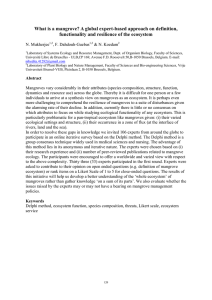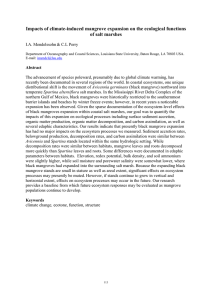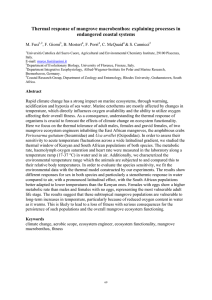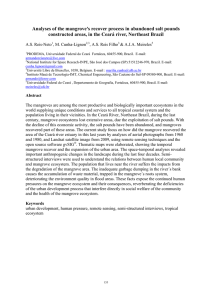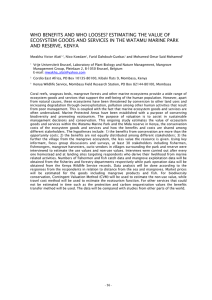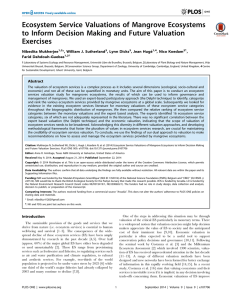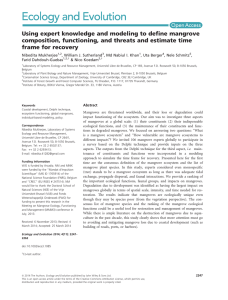What makes a mangrove a mangrove? Two-mode network analysis of
advertisement
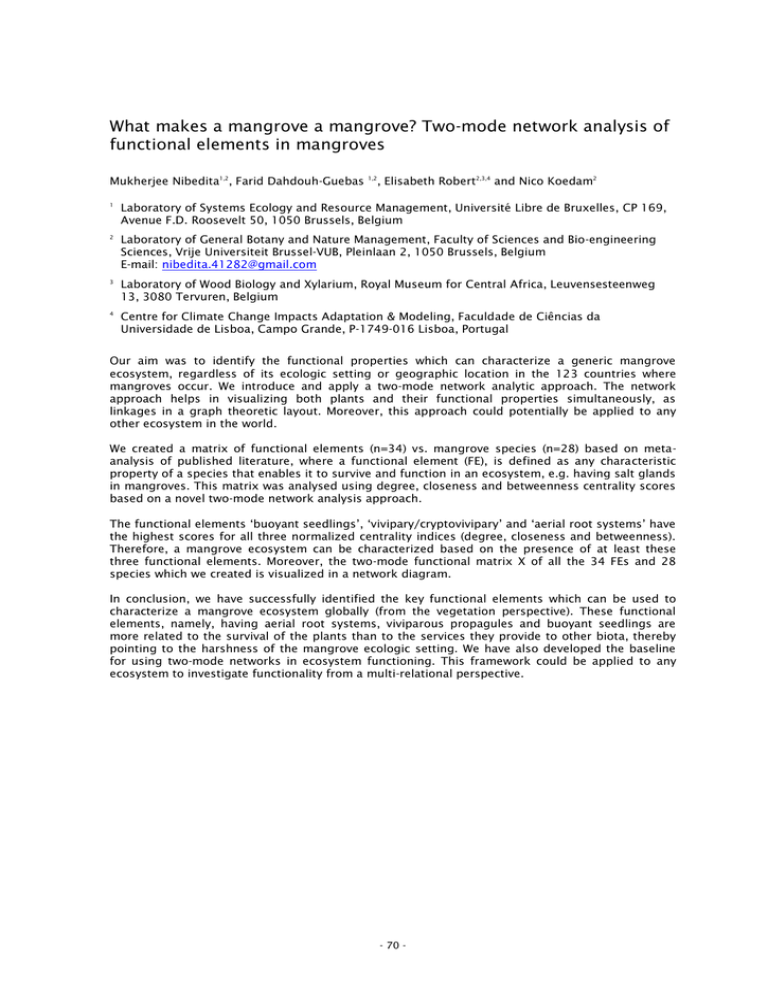
What makes a mangrove a mangrove? Two-mode network analysis of functional elements in mangroves Mukherjee Nibedita1,2, Farid Dahdouh-Guebas 1,2 , Elisabeth Robert2,3,4 and Nico Koedam2 1 Laboratory of Systems Ecology and Resource Management, Université Libre de Bruxelles, CP 169, Avenue F.D. Roosevelt 50, 1050 Brussels, Belgium 2 Laboratory of General Botany and Nature Management, Faculty of Sciences and Bio-engineering Sciences, Vrije Universiteit Brussel-VUB, Pleinlaan 2, 1050 Brussels, Belgium E-mail: nibedita.41282@gmail.com 3 Laboratory of Wood Biology and Xylarium, Royal Museum for Central Africa, Leuvensesteenweg 13, 3080 Tervuren, Belgium 4 Centre for Climate Change Impacts Adaptation & Modeling, Faculdade de Ciências da Universidade de Lisboa, Campo Grande, P-1749-016 Lisboa, Portugal Our aim was to identify the functional properties which can characterize a generic mangrove ecosystem, regardless of its ecologic setting or geographic location in the 123 countries where mangroves occur. We introduce and apply a two-mode network analytic approach. The network approach helps in visualizing both plants and their functional properties simultaneously, as linkages in a graph theoretic layout. Moreover, this approach could potentially be applied to any other ecosystem in the world. We created a matrix of functional elements (n=34) vs. mangrove species (n=28) based on metaanalysis of published literature, where a functional element (FE), is defined as any characteristic property of a species that enables it to survive and function in an ecosystem, e.g. having salt glands in mangroves. This matrix was analysed using degree, closeness and betweenness centrality scores based on a novel two-mode network analysis approach. The functional elements ‘buoyant seedlings’, ‘vivipary/cryptovivipary’ and ‘aerial root systems’ have the highest scores for all three normalized centrality indices (degree, closeness and betweenness). Therefore, a mangrove ecosystem can be characterized based on the presence of at least these three functional elements. Moreover, the two-mode functional matrix X of all the 34 FEs and 28 species which we created is visualized in a network diagram. In conclusion, we have successfully identified the key functional elements which can be used to characterize a mangrove ecosystem globally (from the vegetation perspective). These functional elements, namely, having aerial root systems, viviparous propagules and buoyant seedlings are more related to the survival of the plants than to the services they provide to other biota, thereby pointing to the harshness of the mangrove ecologic setting. We have also developed the baseline for using two-mode networks in ecosystem functioning. This framework could be applied to any ecosystem to investigate functionality from a multi-relational perspective. - 70 -
